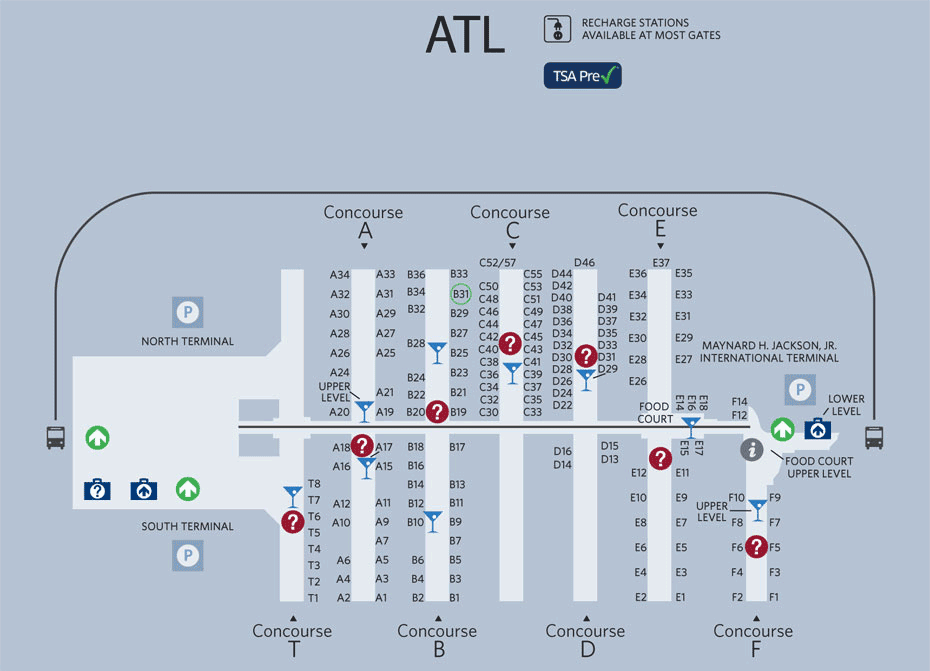ATL maps are becoming increasingly crucial in various fields including geography, urban planning, and environmental studies. These maps offer a detailed representation of terrain, which is invaluable for professionals who require precise data for decision-making. In this article, we will explore the concept of ATL maps, their applications, and how they can be utilized effectively in different domains.
As technology continues to evolve, the significance of ATL maps has grown tremendously. They provide insights that traditional maps may lack, due to their advanced features and detailed data representation. This guide aims to provide a thorough understanding of ATL maps, their importance, and how they can be leveraged effectively.
Whether you are a student, a professional, or simply someone interested in geography, this article will equip you with the knowledge needed to navigate the complexities of ATL maps. Let’s dive deep into the world of advanced terrain learning and uncover the potential of ATL maps.
Table of Contents
- What is an ATL Map?
- Importance of ATL Maps
- Applications of ATL Maps
- How ATL Maps Work
- Creating ATL Maps
- ATL Maps vs. Traditional Maps
- The Future of ATL Maps
- Conclusion
What is an ATL Map?
ATL maps, or Advanced Terrain Learning maps, are specialized maps designed to represent various aspects of terrain in a detailed manner. Unlike traditional maps, ATL maps utilize advanced technology to provide insights into the topography, vegetation, hydrology, and other geographical features of an area. The primary goal of ATL maps is to facilitate a deeper understanding of the terrain, which can be crucial for various applications.
Key Features of ATL Maps
- High-resolution imagery
- Multi-layered data representation
- Integration with Geographic Information Systems (GIS)
- Real-time data updates
Importance of ATL Maps
Understanding the importance of ATL maps helps to appreciate their role in various industries. Here are some reasons why ATL maps are essential:
- Enhanced Decision-Making: The detailed information provided by ATL maps enables professionals to make informed decisions regarding land use, construction, and resource management.
- Environmental Management: ATL maps play a crucial role in monitoring environmental changes, helping to identify areas at risk and formulate response strategies.
- Urban Planning: City planners utilize ATL maps to design efficient layouts, ensuring that infrastructure developments are sustainable and meet the needs of the population.
Applications of ATL Maps
ATL maps find applications across various fields, including:
1. Environmental Science
In environmental science, ATL maps are used to assess the impact of human activities on natural resources and ecosystems.
2. Urban Development
Urban developers use ATL maps to analyze land use patterns, predict growth trends, and plan for future developments.
3. Disaster Management
During natural disasters, ATL maps assist emergency responders in understanding terrain challenges and planning evacuation routes.
4. Agriculture
Farmers utilize ATL maps to identify optimal planting locations based on soil type, moisture levels, and topography.
How ATL Maps Work
ATL maps function through a combination of data collection, processing, and visualization techniques. Here’s a breakdown of the process:
Data Collection
Data for ATL maps is collected using various methods, including satellite imagery, aerial surveys, and ground-based observations. This data is then processed to create a comprehensive representation of the terrain.
Data Processing
The collected data undergoes rigorous processing to ensure accuracy. Advanced algorithms and GIS technology are employed to analyze the data and generate detailed maps.
Visualization
Once processed, the data is visualized using specialized software, resulting in maps that display various terrain features in an intuitive manner.
Creating ATL Maps
Creating ATL maps involves several steps:
- Define Objectives: Determine the purpose of the ATL map and the specific features to be highlighted.
- Data Acquisition: Gather the necessary data from reliable sources, ensuring it is up-to-date and accurate.
- Data Processing: Utilize GIS software to process the data and create the map layers.
- Map Production: Finalize the map design, incorporating user-friendly features and visual elements.
ATL Maps vs. Traditional Maps
When comparing ATL maps to traditional maps, several distinctions emerge:
- Detail: ATL maps provide a higher level of detail, presenting complex data in a more digestible format.
- Interactivity: Many ATL maps are interactive, allowing users to zoom in and explore specific areas.
- Real-time Updates: Unlike traditional maps, ATL maps can be updated in real-time, reflecting changes in the environment.
The Future of ATL Maps
The future of ATL maps looks promising, with advancements in technology paving the way for even more sophisticated mapping solutions. Key trends include:
- Integration with AI: The incorporation of artificial intelligence will enhance data analysis and predictive capabilities.
- Increased Accessibility: As technology becomes more accessible, ATL maps will be available to a broader audience, including educators and community planners.
- Collaboration Tools: Future ATL maps may include collaborative features, allowing multiple users to contribute data and insights.
Conclusion
In conclusion, ATL maps represent a significant advancement in terrain mapping, offering detailed insights that are crucial for various applications. The importance of these maps cannot be overstated, as they play an essential role in decision-making across multiple fields. We encourage readers to explore ATL maps further and consider how they can utilize this powerful tool in their own work.
Feel free to leave your thoughts in the comments below or share this article with others who may benefit from understanding ATL maps better. Additionally, explore our website for more articles on related topics!
Sources
For more information on ATL maps and their applications, please refer to the following sources:
Thank you for reading! We look forward to having you back on our site for more insightful content.
You Might Also Like
Did Kendrick Lamar Beat His Wife? An In-Depth InvestigationMario Almada: A Journey Through The Life Of A Legendary Actor
TD Jakes Legal Problems: Unraveling The Controversies Surrounding The Prominent Pastor
Keri Russell's Father: A Journey Through Family And Legacy
Is Justin Trudeau Dating Anyone? Exploring The Canadian Prime Minister's Love Life
Article Recommendations
:max_bytes(150000):strip_icc()/atlanta-airport-terminal-directory-map-ATLAIRPORT0621-a12b51a04762461d812d7f1c4a9378d4.jpg)

